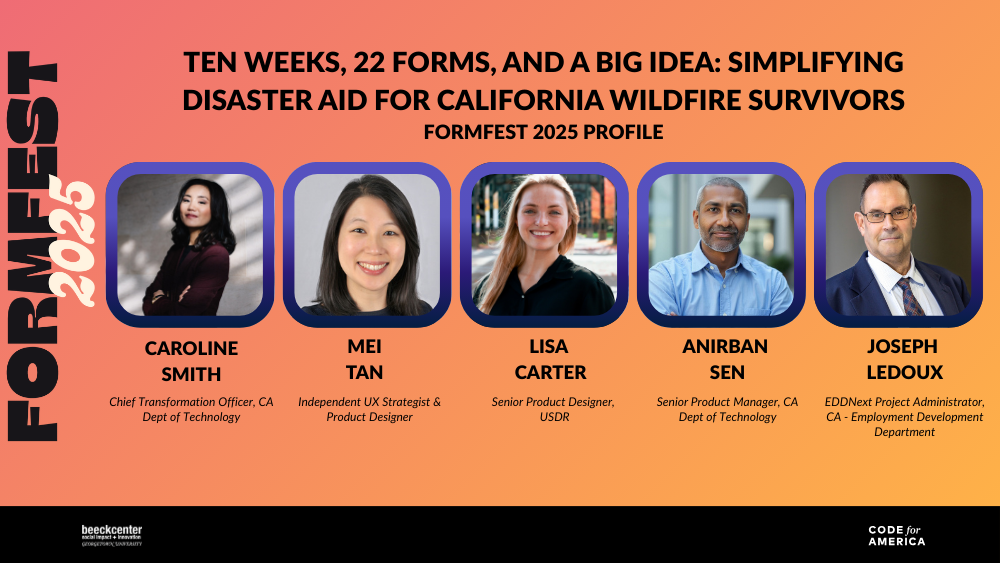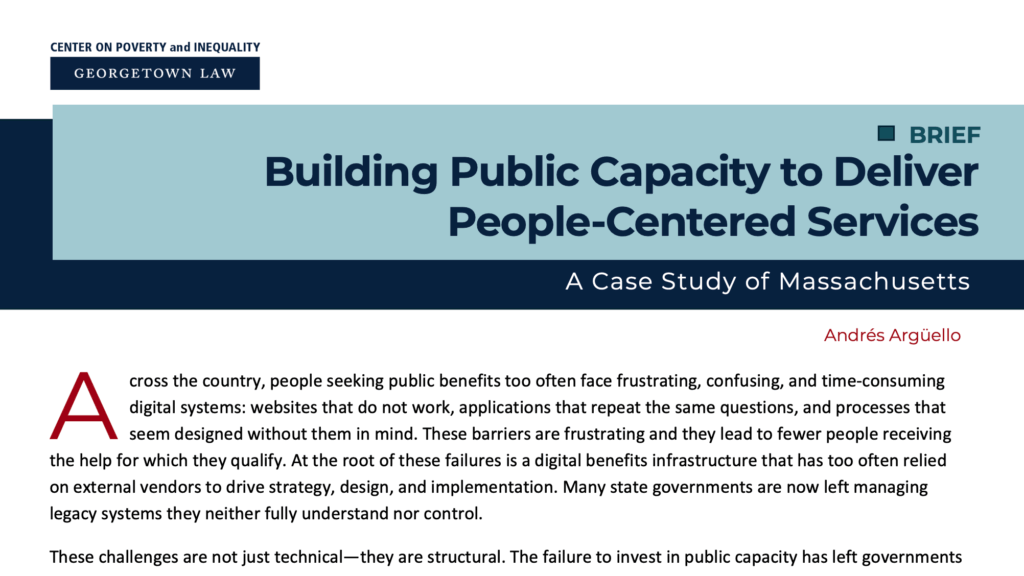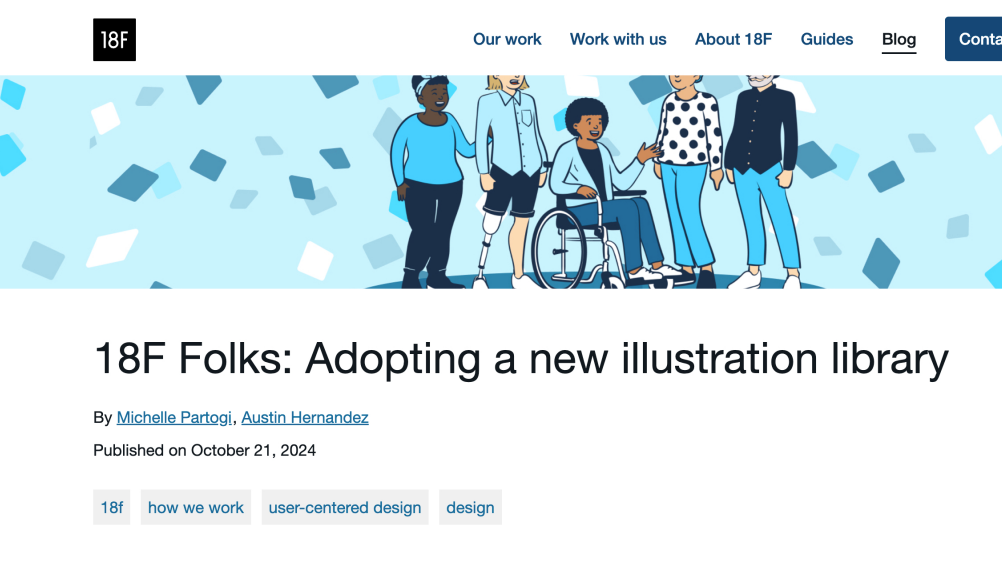FormFest 2024 Recap: Forms Coast to Coast
An event recap from one of FormFest 2024’s closing main stage session featuring speakers from the City of Portland, Oregon and New York City, New York.
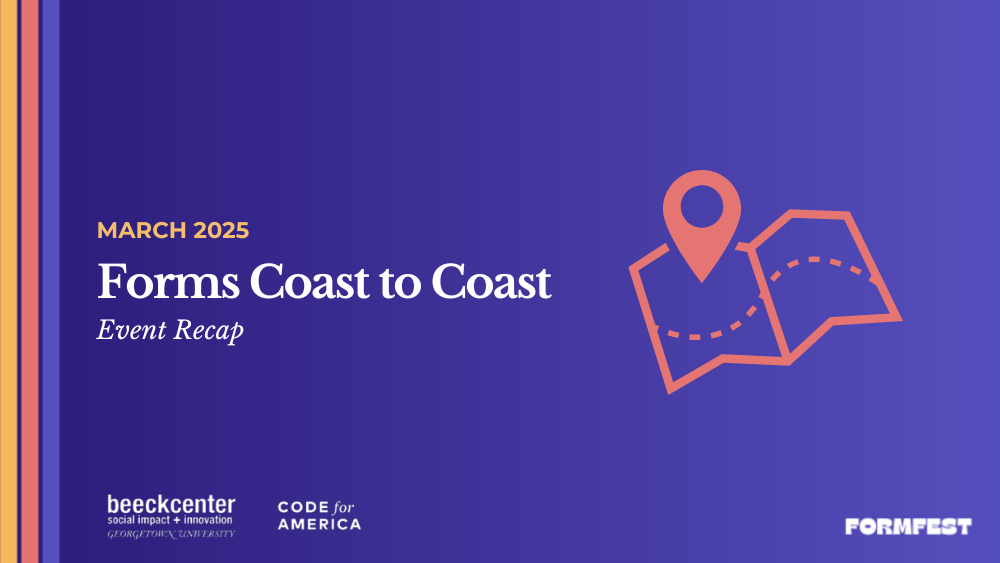
In this concluding panel of FormFest 2024, panelists from the City of New York (NYC) and the City of Portland shared how their teams are leveraging form data to proactively enhance services for residents while streamlining internal processes. David Park, the director of data and business analytics at The National League of Cities, introduced the panel by describing how these two cities on opposite coasts are both building projects that represent the universal truth that forms, when thoughtfully reimagined, can be powerful tools for making small changes that have big impacts. On the West coast, Josh Gregor and Greg Clapp are involved in the development and maintenance of PDX 311, a project that increases access to local government by serving as a single point of contact to find information, report issues, or request services. And on the East coast, Sophia Tareen and Sourabh Chakraborty, from the Office for Economic Opportunity in NYC, work on a benefits eligibility screener that takes in data and uses a rules engine to verify an individual’s eligibility for multiple programs called the NYC Benefits Platform.
Breaking down silos
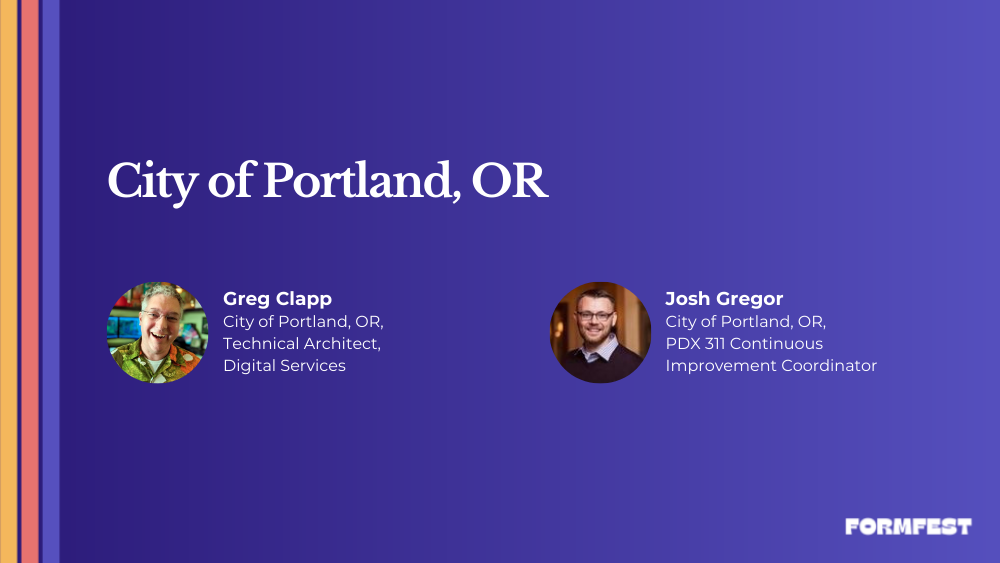
To kick off the panel, the Portland team detailed their project’s timeline and how their approach worked to break down organizational silos. Clapp detailed how he was tasked with developing a website for the City of Portland where things were easier to find and the silos between city organizations were reworked to be easier for users to navigate. This work fortunately dovetailed with the city council’s approval of a plan to create a city-wide centralized customer service program, which is how Clapp got in contact with Gregor and the PDX 311 team. Together the two teams collaborated to revamp Portland’s website and build a replacement for a tool that most Portland city services used to put forward their public facing intake forms. This old tool was shifted to Drupal, an open source content management software, which Clapp noted was helpful because this platform supported mobile devices, had solid ADA accessibility, made their data more mobile, and gave them the ability to create multiple form experiences using the same platform. Clapp and Gregor then demoed some features on the new-and-improved Portland website, including a multi-purpose form that utilized conditional logic to direct residents to specific resources and a custom location widget that allows users to report problems with public trash cans.
Designing for users
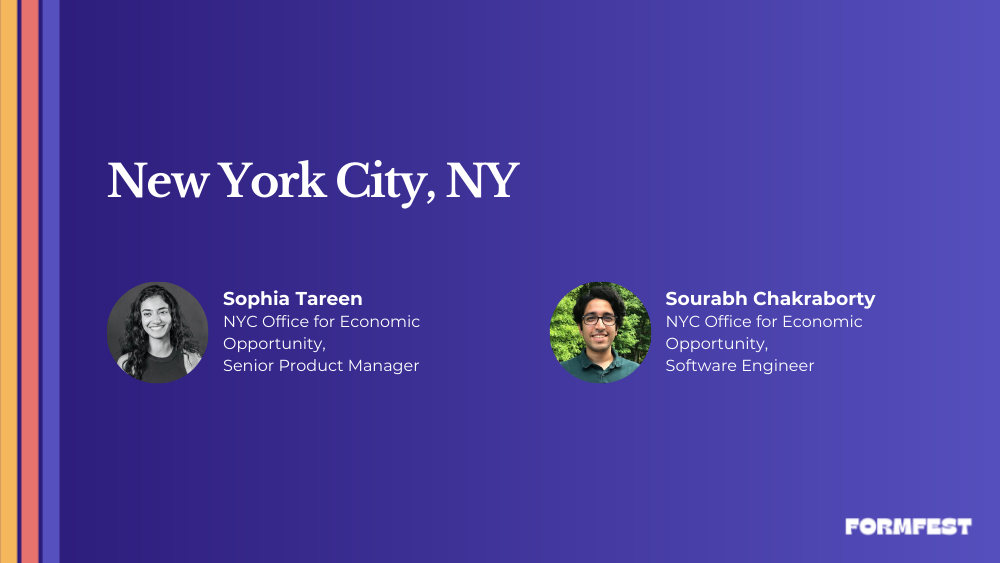
Switching to the New York City based team, Park asked Tareen and Chakraborty to explain what they had learned about designing a process that works for both government agencies and community members through their work developing tools that allow service providers to use existing form data to screen an applicant for additional benefits. Tareen shared that to develop this tool her team focused on creating an experience that is informed, secure, and non-disruptive for both residents and agency partners. She explained that the project was designed to add a natural extension to existing forms being done across government, thereby complementing existing work and endeavoring to not complicate the process. She then walked attendees through the current screening process which involves the following three steps:
- Obtain consent using an existing form. Applicants are asked to confirm ‘Yes, share my data to check for additional benefits.’ This keeps the process informed and makes it easy for applicants to say no.
- Resident data is checked for eligibility across 40+ federal, state, and local programs using the NYC screening API. A list of programs that someone may qualify for is then generated.
- Residents are notified of other programs they are eligible for. This process is centered around meeting residents where they are, so program information can be delivered to an individual in a way that works best for them, including text, email, via a case worker, or on their portal.
Next, Chakraborty went into more depth on how the screening process works. He noted that the screening API importantly does not take in personally identifiable information to make the process more secure. He also explained that information collected from users is run against eligibility rules that are maintained as code. The project team works with benefit agencies to verify these rules and ensure they are up to date.
Reflecting on lessons learned
As both cities are rethinking forms to enhance services, Park asked both teams what they would tell themselves if they were starting from scratch. The Portland team shared that they would remind themselves to talk to internal and external partners early and have a conversation before getting into the solution space in order to better break down silos. They also shared that they would advise themselves to prioritize incremental improvements over perfection and to be prepared to push through the resistance that often comes with generating meaningful change. On the other hand, the New York team stressed the importance of timing, both in a project’s inception and in remembering that some things can take longer than expected. Tareen advised that focusing on what can be controlled and making sure to ask why certain choices are being made can ensure that projects are centering the needs of residents.
For the final question of the panel, Park asked the panelists what they thought was the most surprising impact of using form data to improve services for community members. The Portland team shared that it was gratifying to receive feedback and work on important projects, such as Cooling Portland, that not only validated the capabilities of their new approach to web forms, but also to know that their work was literally saving lives. Clapp concluded by stating that his biggest take away of all was that if you make it easy to communicate with the government, people will do it. The New York City team then chimed in to say that they found specificity, and the ability of their screening API to narrow down results and tailor them to individuals, very impactful. They additionally found that taking the time to provide clear and actionable information about benefits programs to users was very impactful as it helped users gain awareness of why certain programs might benefit them.
Conclusion
In conclusion, both NYC and Portland are harnessing the power of form data to make real, tangible improvements in government services from making benefits more accessible to streamlining services in ways that truly center the needs of community members. As Park shared in the final moments of this panel, the work these two teams are doing serve as a reminder that small thoughtful change can have big impacts. Additionally, these two teams’ work show what’s possible when governments embrace human centered design and use data as a tool for transformation.
Key Takeaways
- Break down silos. Have conversations with internal and external partners before getting into the solution space. Focus on centering the needs of users who often care less about agency affiliations and more about where they can find the help they need.
- Build compliments to existing work. You do not need to reinvent the wheel to improve service delivery. Start by identifying if there are ways you can add a natural extension to existing forms of work being done across government. Do not worry about making something perfect, but instead focus on what small changes you can include to make people’s lives better.
- Meet users where they are. Find ways to deliver information to users in ways that would work best for them. Use specific, clear, and accessible language and be transparent about data use and system processes.
- Prepare for pushback. Meaningful change always meets resistance. In addition to shifting systems and processes, be ready to shift perspectives and redefine how the government connects with communities. Remember you’re in the right place and you’re doing the right work.
See more from this session at FormFest 2024:
Watch the session recording and more from FormFest 2024.
Forms From Coast to Coast
This mainstage session from FormFest 2024 featured form innovations from the City of New York, NY and the City of Portland, OR.
Improving Service in Portland and New York: A FormFest 2024 Profile
A profile on FormFest speakers Greg Clapp, Josh Gregor, Sophia Tareen, Sourabh Chakraborty, featuring stories about their motivations for working on public sector form innovation.
Local Government Form Improvements
This session from FormFest 2024 featured the work in Austin, Texas on criminal justice forms, and the South Bend, Indiana Animal Resource Center’s efforts to redevelop their animal adoption forms.
About FormFest
FormFest is a free virtual event showcasing governments working to make services accessible to everyone through online forms. Discover best practices and tools that are shaping the future of form design and service delivery.
